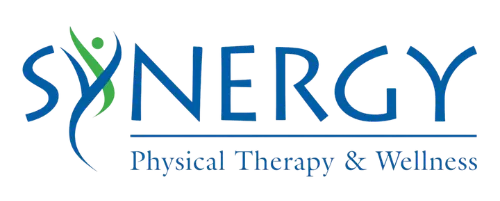
Long Covid is a condition in which symptoms of COVID-19 infection can linger for months, or even longer. People with Long Covid, also sometimes referred to as “Long Haulers”, can experience debilitating symptoms during for extended periods of time. The most common symptoms are extreme fatigue or tiredness. Chest pain, breathlessness and brain fog are also common. Research indicates that as many as 10% of people who contract COVID-19 may develop Long Covid symptoms.
So what can be done?
Physical Therapists (PTs) are continuing to develop treatment options to address this new condition. The American Physical Therapy Association recognizes Physical Therapists as professionals who are ideally suited to treat the effects of this condition. Current practices that have shown promise including the development of a customized physical activity and movement plan for you as well as utilizing new and exciting technologies to address symptoms. The goal is to allow you to do perform the things you want to do while avoiding extreme fatigue.
While the current understanding is that Long Covid results from disruption of multiple systems in the body, there is a general consensus that many times nervous system dysfunction is present to a significant degree. More specifically, there appears to be dysfunction of what is referred to as the “Autonomic Nervous System”, which controls processes in the body that happen automatically, such as heart rate, breathing, regulation of blood pressure, digestion, immune system function and inflammation. With this hypothesis in mind, many medical practitioners have been looking to the Vagus nerve as a potential vector for treatment of Long Covid symptoms.
The Vagus nerve is the longest nerve in the autonomic nervous system critical part of the nervous system, and is crucial in controlling the immune system response to inflammation. Medical practitioners around the globe are trying new methods to treat the Vagus nerve and other aspects of the nervous system, in hopes of reducing Long Covid symptoms.
Why Chose Synergy
Here at Synergy, our therapists are actively using new technologies that stimulate the Vagus . This appears to positively affect the nervous system and is typically noticed quickly. By balancing the nervous system as a whole any condition related to nervous system dysfunction may also improve. At Vienna University of Technology, Eugenijus Kaniusas and colleagues recently published an article supporting the exact non-invasive vagal stimulation treatments we currently offer. Also notable is that this method has recently been approved by Health Canada (Canadas version of the FDA) to treat active symptoms of COVID-19.
To summarize, physical therapists can help you recover from Long Covid and other Autonomic Nervous System dysfunction symptoms using the technology and methods mentioned above, directed movement therapy and by seeking to improving the vitality of the nervous system itself. If you, or someone you know is suffering from Long COVID, do not hesitate to call our clinic to see how we can help you.
Sincerely,
The Team at Synergy Physical Therapy & Wellness and Wellness, Pueblo
Sources:
Dani, Melanie et al. “Autonomic dysfunction in ‘long COVID’: rationale, physiology and management strategies.” Clinical medicine (London, England) vol. 21,1 (2021): e63-e67. doi:10.7861/clinmed.2020-0896
Guilmot A, Maldonado Slootjes S, Sellimi A, Bronchain M, Hanseeuw B, Belkhir L, Yombi JC, De Greef J, Pothen L, Yildiz H, Duprez T, Fillée C, Anantharajah A, Capes A, Hantson P, Jacquerye P, Raymackers JM, London F, El Sankari S, Ivanoiu A, Maggi P, van Pesch V. Immune-mediated neurological syndromes in SARS-CoV-2-infected patients. J Neurol. 2021 Mar;268(3):751-757. doi: 10.1007/s00415-020-10108-x. Epub 2020 Jul 30. PMID: 32734353; PMCID: PMC7391231.
Kaniusas, E., Szeles, J. C., Kampusch, S., Alfageme-Lopez, N., Yucuma-Conde, D., Li, X., Mayol, J., Neumayer, C., Papa, M., & Panetsos, F. (2020). Non-invasive auricular vagus nerve stimulation as a potential treatment for COVID19-originated acute respiratory distress syndrome. Frontiers in Physiology, 11. https://doi.org/10.3389/fphys.2020.00890
APTA PPS Toolkit December 2021 Press Release. Available from: https://ppsapta.org/pdfs/marketing-resources/monthly-marketing-toolkit/APTA%20PPS%20Toolkit%20December%202021%20Press%20Release.pdf
Image from: https://www.google.com/url?sa=i&url=https%3A%2F%2Fwww.shelteringarms.com%2Frehablog%2Fcovid-19-long-hauler-recovery%2F&psig=AOvVaw3ILFvEuoacHzJw57B8P_AI&ust=1647542886731000&source=images&cd=vfe&ved=0CAsQjRxqFwoTCPDKntmly_YCFQAAAAAdAAAAABAQ
